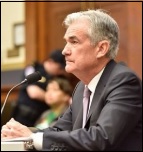By Pam Martens and Russ Martens: October 15, 2020 ~
The United States is experiencing the worst pandemic since 1918. The U.S. economy is experiencing the worst economic crisis since the Great Depression of the 1930s. And the general public is attempting to vote in the most important presidential election of a lifetime with obstacles like fake ballot boxes, 5-hour wait lines, and destroyed mail-sorting machines. What is the central bank of the United States, the Federal Reserve, doing with its free time at this critical moment? It’s rewriting its rules for responding to Freedom of Information Act (FOIA) requests from the public and media.
After revising the Fed’s own FOIA rules earlier this year, the Fed is now rewriting the FOIA rules for the Federal Open Market Committee (FOMC). That just happens to be the entity in charge of sluicing that cumulative $9 trillion to trading houses on Wall Street from September 17, 2019 through March of this year. The Fed has yet to release one detail about what specific trading houses got the money and how much each got. But the Fed is very likely contemplating the day that it is sued for that information or Congress or the courts issue subpoenas.
Yesterday, the Fed released the details of what it is proposing in changes to its FOIA rules for the FOMC. The public will have 60 days to submit a comment letter. (Comments from the public on the proposal can be emailed to FOMCregs.comments@FRB.gov – include “Part 271 Rules Regarding Availability of Information” in the subject line of the message.)
This might be an excellent time for Americans to tell the Fed just what they think about its history of secrecy and stonewalling. For a primer on that history, see our article: Why Americans Don’t Trust the Fed: It’s Too Damn Secretive.
While the Fed attempts to give the impression that it is merely shuffling around language that already exists under law, what does pop out is that it is accentuating that it can withhold information based on an “Executive Order.” Has President Donald Trump issued such an Executive Order to the Fed?
The revised paragraph will read as follows:
“§ 271.15 Exemptions from disclosure. (a) Types of records exempt from disclosure. Pursuant to 5 U.S.C. 552(b), the following records of the Committee are exempt from disclosure under this part. (1) Any information that is specifically authorized under criteria established by an executive order to be kept secret in the interest of national defense or foreign policy and is in fact properly classified pursuant to the executive order.”
The Fed is also adding a new section, §271.3, which describes the process for certification and service of subpoenas. Is the Fed contemplating subpoenas under a new Congress next year? Here’s why that might happen.
According to the Fed’s own website, it has not released transaction level data on three of its Section 13(3) emergency lending programs: the Primary Dealer Credit Facility; the Commercial Paper Funding Facility; and the Money Market Mutual Fund Liquidity Facility. Under Section 1101 of the Dodd-Frank Act of 2010, it was required to provide that information to the Senate Banking Committee and the House Financial Services Committee within seven days, with regular updates.
Section 1103 of Dodd-Frank requires 13(3) funding facility data to be publicly released a year after the facility is terminated or two years after lending has ceased, whichever comes first. But Fed Chairman Jerome Powell has repeatedly testified before Congress that the Fed would be providing full transparency now on these programs.
The Fed would appear to be getting its ducks in a row for when the lawsuits and subpoenas start to fly.


